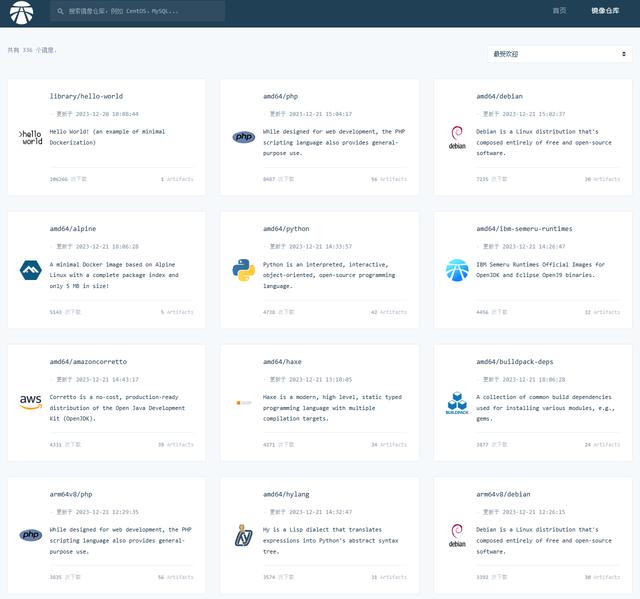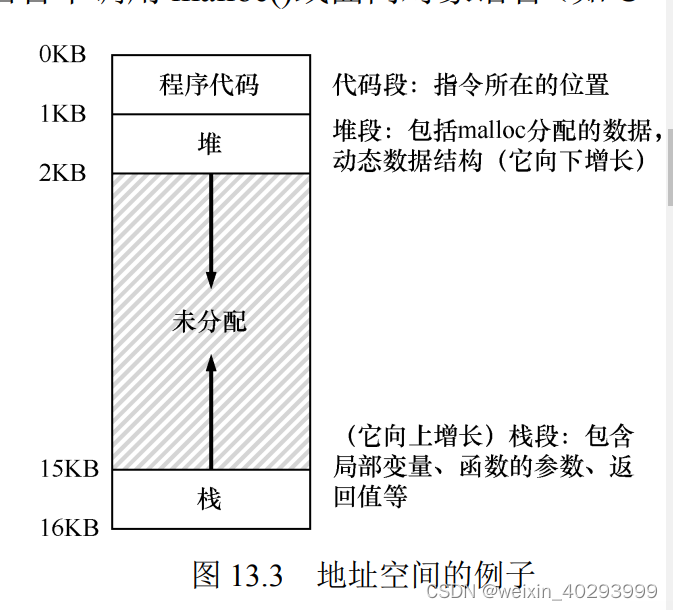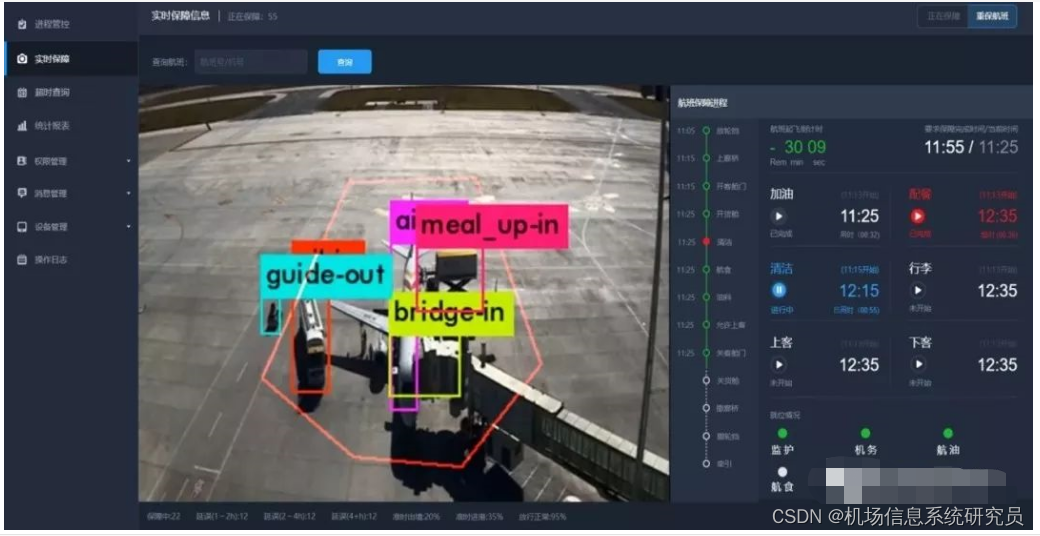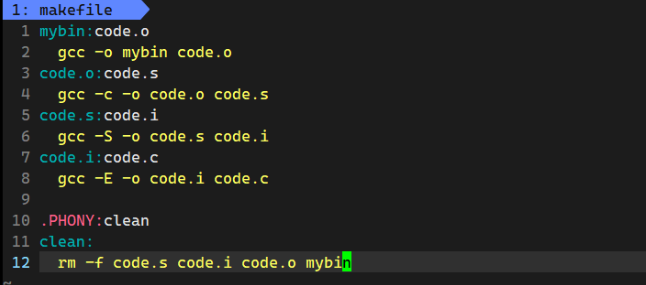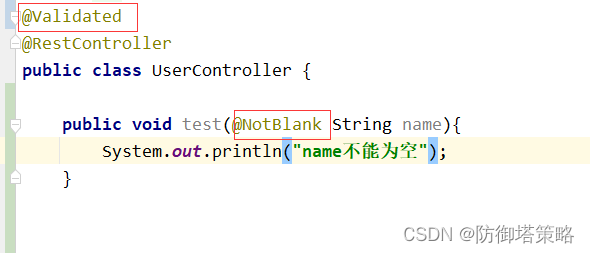一、前言
在本系列文章中介绍了 Form 表单认证和注销流程,对部分源码也进行详细分析。
本章主要学习 Spring Security 中表单认证的相关自定义配置。
二、自定义登录页面
Spring Security 表单认证默认规则中对未认证的请求会重定向到默认登录页面,也支持自定义设置登录页面。
2.1 整合 Thymeleaf 模版引擎
2.1.1 pom 依赖
完整 pom.xml:
<?xml version="1.0" encoding="UTF-8"?>
<project xmlns="http://maven.apache.org/POM/4.0.0" xmlns:xsi="http://www.w3.org/2001/XMLSchema-instance"xsi:schemaLocation="http://maven.apache.org/POM/4.0.0 https://maven.apache.org/xsd/maven-4.0.0.xsd"><modelVersion>4.0.0</modelVersion><parent><artifactId>spring-security</artifactId><groupId>com.gm</groupId><version>0.0.1-SNAPSHOT</version></parent><artifactId>form-security-custom</artifactId><packaging>jar</packaging><description>form表单登录示例(自定义)</description><dependencies><dependency><groupId>org.springframework.boot</groupId><artifactId>spring-boot-starter-web</artifactId></dependency><dependency><groupId>org.springframework.boot</groupId><artifactId>spring-boot-starter-security</artifactId></dependency><dependency><groupId>org.springframework.boot</groupId><artifactId>spring-boot-starter-thymeleaf</artifactId></dependency><dependency><groupId>org.thymeleaf.extras</groupId><artifactId>thymeleaf-extras-springsecurity6</artifactId></dependency><dependency><groupId>org.springframework.security</groupId><artifactId>spring-security-test</artifactId><scope>test</scope></dependency></dependencies>
</project>
2.1.2 Thymeleaf 配置
src/main/resources/application.yaml:
server:port: 9000logging:level:org.springframework.security: TRACEspring:thymeleaf:#配置模板路径,默认是templatesprefix: classpath:/templates/#文件后缀suffix: .html#编码encoding: UTF-8#内容类别content-type: text/html#模板的模式,支持 HTML, XML TEXT JAVASCRIPTmode: HTML#开发时建议设置为false,否则会有缓存,导致页面没法及时看到更新后的效果。cache: false
2.2 创建登录页
在 src/main/resources/templates 目录下创建一个简单的登录页 login.html :
<!DOCTYPE html>
<html xmlns="http://www.w3.org/1999/xhtml" xmlns:th="https://www.thymeleaf.org" xmlns:sec="http://www.thymeleaf.org/extras/spring-security">
<head><meta charset="UTF-8"><meta name="viewport" content="width=device-width, initial-scale=1.0"><title>登录</title><!-- 引入 Bootstrap 样式文件 --><link rel="stylesheet" href="https://cdn.jsdelivr.net/npm/bootstrap@5.3.0/dist/css/bootstrap.min.css"><style>body {background-color: #f8f9fa;}.login-container {max-width: 400px;margin: 0 auto;margin-top: 100px;padding: 20px;border-radius: 5px;box-shadow: 0 0 10px rgba(0, 0, 0, 0.1);background-color: #fff;}.custom-alert {background-color: #FFD2D2;padding: 10px;border-radius: 5px;display: flex;align-items: center;justify-content: center;text-align: center;min-height: 50px; /* 设置最小高度 */}</style>
</head>
<body>
<div class="container"><div class="row justify-content-center"><div class="col-md-6 login-container"><h2 class="text-center mb-4">Login</h2><form th:action="@{/login}" method="post"><div th:if="${exception}" class="custom-alert"><p th:text="${exception}"></p></div><div th:if="${logout}" class="custom-alert"><p th:text="${logout}"></p></div><div class="mb-3"><input type="hidden" th:name="${_csrf.parameterName}" th:value="${_csrf.token}"/><label for="username" class="form-label">用户名</label><input type="text" class="form-control" id="username" name="username" required></div><div class="mb-3"><label for="password" class="form-label">密码</label><input type="password" class="form-control" id="password" name="password" required></div><button type="submit" class="btn btn-primary w-100">Login</button></form></div></div>
</div><!-- 引入 Bootstrap JS 文件 -->
<script src="https://cdn.jsdelivr.net/npm/bootstrap@5.3.0/dist/js/bootstrap.bundle.min.js"></script>
</body>
</html>
<input type="hidden" th:name="${_csrf.parameterName}" th:value="${_csrf.token}"/>是处理开启CSRF保护所需参数<div th:if="${exception}" class="custom-alert"><p th:text="${exception}"></p></div>是显示认证相关异常,稍后详细介绍<div th:if="${logout}" class="custom-alert"><p th:text="${logout}"></p></div>是显示注册相关信息,稍后详细介绍
2.3 创建 Controller 访问控制
新建 LoginController.java:
@Controller
@Slf4j
class LoginController {/*** 登录页面** @return*/@GetMapping("/login")String login() {return "login";}
}
2.4 Spring Security 配置
@Configuration
@EnableWebSecurity(debug = true)
public class SecurityConfig {/*** 构建SecurityFilterChain** @param http* @return* @throws Exception*/@BeanSecurityFilterChain defaultSecurityFilterChain(HttpSecurity http) throws Exception {// 配置所有http请求必须经过认证http.authorizeHttpRequests(authorizeRequests ->authorizeRequests.requestMatchers(new String[]{"/favicon.ico", "/custom/error", "/error", "/logout/success"}).permitAll().anyRequest().authenticated());// 开启表单认证(默认配置)// http.formLogin(Customizer.withDefaults());// 表单认证自定义配置http.formLogin(form ->form.loginPage("/login").permitAll() // /login,需permitAll放开访问控制并配置对应的controller请求地址.loginProcessingUrl("/login") // form表单登录处理请求URL(POST).usernameParameter("username") // form表单用户名参数名称.passwordParameter("password") // form表单密码参数名称);// 开启 CSRF 保护http.csrf(Customizer.withDefaults());// 禁止 CSRF 保护// http.csrf(csrf -> csrf.disable());// 构造器构建SecurityFilterChain对象return http.build();}/*** 配置登录名密码** @return*/@Beanpublic UserDetailsService userDetailsService() {UserDetails user = User.withUsername("admin").password("{noop}123").roles("USER").build();return new InMemoryUserDetailsManager(new UserDetails[]{user});}
}
loginPage("/login").permitAll():配置URL生成登录页面,常与Controller配合使用,必须是POST。loginProcessingUrl("/login"):配置登录请求处理URL,用于修改UsernamePasswordAuthenticationFilter中拦截登录处理请求URL地址。usernameParameter("username"):配置用户名参数名称 ,用于修改UsernamePasswordAuthenticationFilter中拦截登录处理请求用户名对应的参数名称。passwordParameter("password"):配置密码参数名称 ,用于修改UsernamePasswordAuthenticationFilter中拦截登录处理请求密码对应的参数名称。
2.5 效果

三、自定义登录成功请求转发/重定向地址
3.1 创建登录成功页
在 src/main/resources/templates 目录下创建一个简单的登录成功页面 success.html :
3.2 创建 Controller 访问控制
在 LoginController.java 新增:
/*** 登录成功页面** @return*/
@RequestMapping("/login/success")
String success() {return "success";
}
3.3 Spring Security 配置
@Configuration
@EnableWebSecurity(debug = true)
public class SecurityConfig {/*** 构建SecurityFilterChain** @param http* @return* @throws Exception*/@BeanSecurityFilterChain defaultSecurityFilterChain(HttpSecurity http) throws Exception {// 配置所有http请求必须经过认证http.authorizeHttpRequests(authorizeRequests ->authorizeRequests.requestMatchers(new String[]{"/favicon.ico", "/custom/error", "/error", "/logout/success"}).permitAll().anyRequest().authenticated());// 开启表单认证(默认配置)// http.formLogin(Customizer.withDefaults());// 表单认证自定义配置http.formLogin(form ->form.loginPage("/login").permitAll() // /login,需permitAll放开访问控制并配置对应的controller请求地址.loginProcessingUrl("/login") // form表单登录处理请求URL(POST).usernameParameter("username") // form表单用户名参数名称.passwordParameter("password") // form表单密码参数名称//.successForwardUrl("/login/success") // 登录成功请求转发URL(请求转发地址栏不变).defaultSuccessUrl("/login/success") // 登录成功请求重定向URL(重定向地址栏变));// 开启 CSRF 保护http.csrf(Customizer.withDefaults());// 禁止 CSRF 保护// http.csrf(csrf -> csrf.disable());// 构造器构建SecurityFilterChain对象return http.build();}/*** 配置登录名密码** @return*/@Beanpublic UserDetailsService userDetailsService() {UserDetails user = User.withUsername("admin").password("{noop}123").roles("USER").build();return new InMemoryUserDetailsManager(new UserDetails[]{user});}
}
-
successForwardUrl("/login/success"):配置登录成功请求转发URL(请求转发地址栏不变),常与Controller配合使用,详情请见:ForwardAuthenticationSuccessHandler。 -
defaultSuccessUrl("/login/success"):配置登录成功请求重定向URL(重定向地址栏变),常与Controller配合使用,详情请见:SavedRequestAwareAuthenticationSuccessHandler。
3.4 效果
3.4.1 请求转发效果

3.4.2 重定向效果
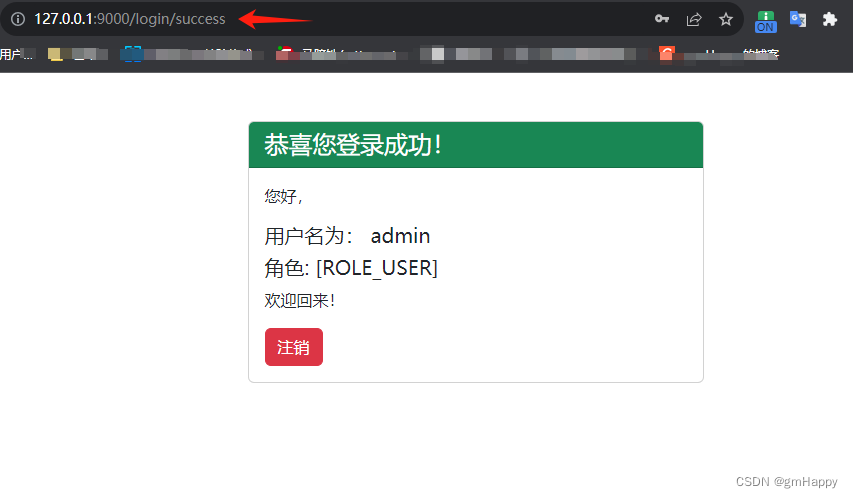
四、自定义登录失败请求转发/重定向地址
4.1 创建登录失败页
登录失败页采用原登录页,显示各类登录异常。
4.2 创建 Controller 访问控制
/*** 登录失败页面** @return*/
@RequestMapping("/custom/error")
String failure(HttpServletRequest request, Model model) {// 以下是配置failureForwardUrl方式获取登录异常Object exception = request.getAttribute(WebAttributes.AUTHENTICATION_EXCEPTION);if (exception != null) {if (exception instanceof BadCredentialsException) {BadCredentialsException badCredentialsException = (BadCredentialsException) exception;model.addAttribute("exception", badCredentialsException.getMessage());return "login";}}exception = request.getAttribute(WebAttributes.ACCESS_DENIED_403);if (exception instanceof AccessDeniedException) {AccessDeniedException accessDeniedException = (AccessDeniedException) exception;model.addAttribute("exception", accessDeniedException.getMessage());return "login";}// 以下是配置failureUrl方式获取登录异常HttpSession session = request.getSession(false);if (session != null) {exception = request.getSession().getAttribute(WebAttributes.AUTHENTICATION_EXCEPTION);model.addAttribute("exception", ((AuthenticationException) exception).getMessage());return "login";}return "login";
}
注意:
根据Spring Security中失败请求处理的配置不同获取异常的方式也是多样的。
4.3 Spring Security 配置
@Configuration
@EnableWebSecurity(debug = true)
public class SecurityConfig {/*** 构建SecurityFilterChain** @param http* @return* @throws Exception*/@BeanSecurityFilterChain defaultSecurityFilterChain(HttpSecurity http) throws Exception {// 配置所有http请求必须经过认证http.authorizeHttpRequests(authorizeRequests ->authorizeRequests.requestMatchers(new String[]{"/favicon.ico", "/custom/error", "/error", "/logout/success"}).permitAll().anyRequest().authenticated());// 开启表单认证(默认配置)// http.formLogin(Customizer.withDefaults());// 表单认证自定义配置http.formLogin(form ->form.loginPage("/login").permitAll() // /login,需permitAll放开访问控制并配置对应的controller请求地址.loginProcessingUrl("/login") // form表单登录处理请求URL(POST).usernameParameter("username") // form表单用户名参数名称.passwordParameter("password") // form表单密码参数名称//.successForwardUrl("/login/success") // 登录成功请求转发URL(请求转发地址栏不变).defaultSuccessUrl("/login/success") // 登录成功请求重定向URL(重定向地址栏变).failureForwardUrl("/custom/error") // 登录失败请求转发URL(请求转发地址栏不变)//.failureUrl("/custom/error") // 登录失败请求重定向URL(重定向地址栏变)(POST));// 配置AccessDeniedException异常处理请求URL(POST),主要是是处理401 BadCredentialsException 和 403 AccessDeniedException 异常http.exceptionHandling(exception -> exception.accessDeniedPage("/custom/error"));// 开启 CSRF 保护http.csrf(Customizer.withDefaults());// 禁止 CSRF 保护// http.csrf(csrf -> csrf.disable());// 构造器构建SecurityFilterChain对象return http.build();}/*** 配置登录名密码** @return*/@Beanpublic UserDetailsService userDetailsService() {UserDetails user = User.withUsername("admin").password("{noop}123").roles("USER").build();return new InMemoryUserDetailsManager(new UserDetails[]{user});}
}
-
failureForwardUrl("/custom/error"):配置登录失败跳转请求URL,常与Controller配合使用,详情请见:ForwardAuthenticationFailureHandler。 -
failureUrl("/custom/error"):配置登录失败请求重定向URL(重定向地址栏变),常与Controller配合使用,详情请见:SimpleUrlAuthenticationFailureHandler。 -
http.exceptionHandling(exception -> exception.accessDeniedPage("/custom/error")):配置AccessDeniedException异常处理调整URL,主要是是处理401 BadCredentialsException和403 AccessDeniedException异常,详情请见:AccessDeniedHandlerImpl。
4.4 效果


五、自定义登录成功/失败处理器
目前基本都是前后端分离,基于 JSON 实现交与,后端中并没有任何页面,也不需要跳转地址,只需要告知前端登录成功返回用户信息即可,然后由前端进行页面跳转。
5.1 自定义登录成功处理器
在上篇录流程分析过,登录成功后会调用登录成功处理器(默认SavedRequestAwareAuthenticationSuccessHandler)进行页面跳转,那么只需要自定义登录成功处理器,就可以直接实现 JSON 返回,AuthenticationsuccessHandler 接口用于处理用户身份验证成功后的处理策略,实现可以随心所欲:
public class JsonAuthenticationSuccessHandler implements AuthenticationSuccessHandler {/*** 登录成功后直接返回 JSON** @param request 请求* @param response 响应* @param authentication 成功认证的用户信息*/@Overridepublic void onAuthenticationSuccess(HttpServletRequest request, HttpServletResponse response, Authentication authentication) throws IOException, ServletException {response.setContentType("application/json;charset=utf-8"); // 返回JSONresponse.setStatus(HttpStatus.OK.value()); // 状态码 200Map<String, Object> result = new HashMap<>(); // 返回结果result.put("msg", "登录成功");result.put("code", 200);result.put("data", authentication);response.getWriter().write(JSONUtil.toJsonStr(result));}
}
5.2 自定义登录失败处理器
在上篇录流程分析过,登录失败后会调用登录失败处理器(默认SimpleUrlAuthenticationFailureHandler)进行页面跳转,那么只需要自定义登录失败处理器,就可以直接实现 JSON 返回,AuthenticationFailureHandler 接口用于处理用户身份验证成功后的处理策略,实现可以随心所欲:
public class JsonAuthenticationFailureHandler implements AuthenticationFailureHandler {@Overridepublic void onAuthenticationFailure(HttpServletRequest request, HttpServletResponse response, AuthenticationException exception) throws IOException, ServletException {response.setContentType("application/json;charset=utf-8"); // 返回JSONresponse.setStatus(HttpStatus.BAD_REQUEST.value()); // 状态码 400Map<String, Object> result = new HashMap<>(); // 返回结果result.put("msg", "登录失败");result.put("code", 400);result.put("data", exception.getMessage());response.getWriter().write(JSONUtil.toJsonStr(result));}
}
